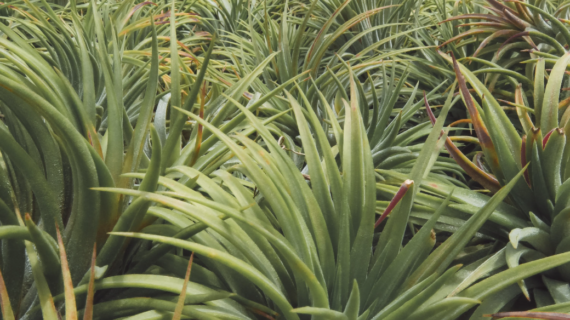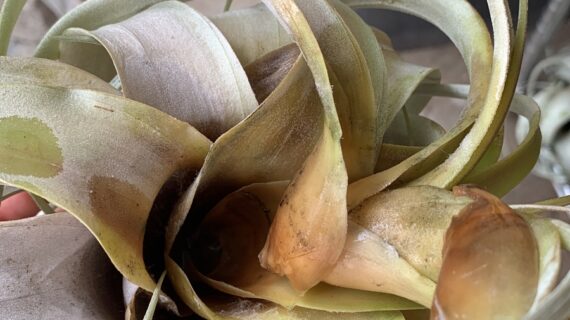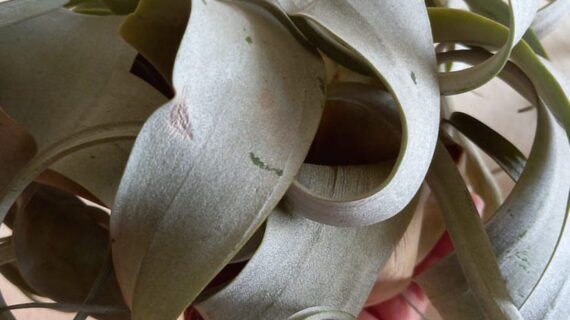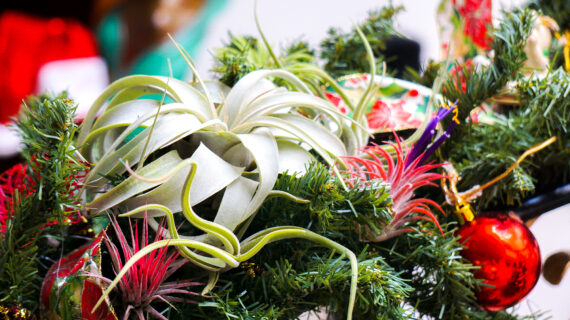
Noticing brown tips or leaves on your Tillandsia? You’re not alone—and the good news is: it doesn’t always mean your air plant is dying.
Tillandsias (also known as air plants) are resilient and easy to care for, but they still need the right balance of water, light, and airflow. When things go off balance, they show warning signs—and browning is one of the most common.
In this blog, we’ll explain:
Why your air plant might be turning brown
How to identify the exact cause
What you can do to fix it—and prevent it from happening again
Dehydration: The #1 Cause of Brown, Crispy Tips
The story of air plants begins millions of years ago. Tillandsias belong to the Bromeliaceae family, which also includes the pineapple. This diverse family has over 650 species of Tillandsias, each adapted to different environments ranging from rainforests to deserts. Air plants are native to the Americas, with a significant concentration in Central and South America, Mexico, and parts of the southern United States.
Ancient Adaptations
Over time, air plants developed unique adaptations to thrive in various climates and ecosystems. Their most distinctive feature is their ability to absorb water and nutrients directly through their leaves, rather than relying on roots and soil. This adaptation allows them to live in challenging environments such as rocky cliffs, tree branches, and even desert sands, where other plants struggle to survive.
Trichomes: Air plants have tiny hair-like structures on their leaves called trichomes. These trichomes help them capture moisture and nutrients from the air. In dry conditions, the trichomes act as a protective layer, reducing water loss and reflecting excess sunlight.
Versatile Growth Habits: Unlike many plants, Tillandsias can grow in various positions, even upside down. This versatility enables them to colonize a wide range of habitats, from dense forests to barren rocks.
Overwatering or Poor Drying: Rot in Disguise

If your Tillandsia has soft brown spots at the base or leaves that fall off easily, the issue is likely rot—caused by too much water or poor airflow.
How it happens:
- Leaving your plant wet for too long after watering
- Water pooling in the center or base of the plant
- Not drying the plant upside down
What to do:
Gently remove rotting leaves and inspect the core
Allow the plant to dry fully upside down after every soak
Increase airflow and space plants out
Cut back on watering (every 10–14 days instead of weekly)
❗ Severe rot is often irreversible, but catching it early can save your plant.
Too Much Direct Sun: Sunburn or Heat Stress

Air plants love bright light, but harsh direct sunlight—especially through windows—can burn their leaves, leading to dry, brown patches or fading color.
Signs of sun damage:
- Brown, patchy marks on one side
- Bleached or faded leaves
- Leaf edges curling and turning crispy
What to do:
- Move your plant to bright, indirect light
- Avoid placing it near hot window glass or in full midday sun
- Morning light or filtered sunlight is ideal
🌞 Think “bright but soft” light, not tropical beach heat.
Natural Aging: It Might Just Be Old Leaves
Like all plants, Tillandsias shed old leaves as they grow. Browning at the bottom of the plant may simply be part of the natural aging process.
What to do:
- Gently remove dry, brown bottom leaves if they come off easily
- Continue regular care
- Look for new growth in the center—that’s a good sign your plant is healthy
🌱 Don’t confuse normal leaf aging with a care issue. Focus on the center of the plant—it tells you the real story.
Lack of Air Circulation

Air plants breathe through their leaves, so good airflow is essential—especially after watering. Without it, moisture lingers and invites fungus or rot, which can show up as browning.
What to do:
Never leave air plants in enclosed containers or bowls without holes
Always dry upside down after watering
Place near an open window, fan, or airy space
💨 Air flow is just as important as light and water for healthy Tillandsias.
✅ Quick Troubleshooting Guide
Symptom | Likely Cause | Solution |
Brown, crispy tips | Dehydration | Soak more frequently, add misting |
Soft brown base or falling leaves | Overwatering / Rot | Remove damaged parts, dry upside down |
Brown patches on one side | Sunburn | Move to indirect light |
Browning bottom leaves | Natural aging | Trim if loose, no action needed |
Browning after watering | Poor airflow | Improve ventilation, space out plants |
A browning Tillandsia is not the end of the world. In fact, it’s your plant’s way of saying: “Hey, I need a little help here.”
Once you identify the cause—whether it’s too much water, not enough, or too much sun—you can adjust your care routine and help your plant bounce back.
Remember, Tillandsias are resilient. With the right light, water, and airflow, they can thrive for years—and even reward you with blooms and pups!
💬 Have More Questions?
We’re here to help. Whether you’re caring for your first air plant or managing hundreds, our team at Air Plants World is ready to guide you.